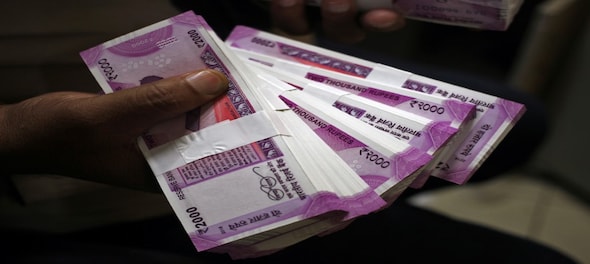
With Brent crude oil prices soaring from $55 per barrel to $86 in the last one year, coupled with a free fall of the rupee from Rs 65 to Rs 74 to the US dollar, the government is grappling with the unsavoury likelihood of the drying up of the budgetary pool for development projects.
As per the latest estimates released by the Petroleum Planning and Analysis Cell, the oil import bill for India is expected to increase by $37 billion to $125 billion during the current financial year. The fiscal health of the economy is on the decline. As petrol and diesel prices are deregulated, fuel cost is hitting not only Indian corporate balance sheets but also Indian households.
In spite of elections in four states just around the corner and the impending general elections next year, the current government has continued to remain consistent on the path of fiscal prudence. With the Reserve Bank of India (RBI) by its side, the government has introduced the following measures under the external commercial borrowings (ECB) regime, in an attempt to reboot the rupee:
The government has decided to further incentivise low cost foreign borrowings through masala bonds to increase the forex inflow. Accordingly, by way of a press release dated September 17, 2018, the Central Board of Direct Taxes announced that interest payable by an Indian company or a business trust to a non-resident, including a foreign company, in respect of RDBs issued outside India, during the period from September 17, 2018 to March 31, 2019, shall be exempt from tax.
Till now, such interest was subjected to income-tax at 5 percent plus applicable surcharge and cess, under section 115A of the Income-Tax Act, 1961 (Act). Consequently, no tax shall be deducted on the payment of interest in respect of the said bonds under section 194LC of the act. Requisite amendments in the relevant provisions of the act are yet to be incorporated. It’s widely perceived that these measures are temporary in nature and have been undertaken primarily to check any further fall in the rupee.
Points To Ponder
Unlike the term ‘infrastructure sector’, the term ‘manufacturing sector’ is not defined in the ECB regulations. While the ECB regulations direct to other regulations for certain terms (For definition of MSME sector, refer MSME Development Act, 2006 and for definition of low cost affordable housing project, refer the extant Foreign Direct Investment (FDI) policy), there is no such guidance with respect to definition of ‘manufacturing sector’.
The FDI policy and associated Indian exchange control regulations do not outline the contours of ‘manufacturing’, although FDI is permitted in manufacturing of small arms and ammunitions, locomotives and coaches, medical devices. The National Manufacturing Policy and the guidelines issued by the department of industrial policy and promotion with respect to National Investment and Manufacturing Zones, also seem to be silent on what should qualify as manufacturing. In order to understand the ambit and scope of manufacturing, one may have to seek guidance from other relevant legislations such as Drugs and Cosmetics Act, 1940, Central Excise Act, 1944 (applicable up to June 30, 2017), Goods and Services Tax (effective July 1, 2017) (as manufacturing is no longer a taxable event).
While OMCs are not under an obligation to hedge the forex exposure with respect to foreign debt sourced under the relaxed regime, they need to devise a prudent risk management policy for such ECBs. The question which arises is - what is a prudent risk management policy with respect to ECBs? It will be helpful for OMCs if RBI can provide certain parameters based on which it can evaluate the risk management policy adopted by OMCs availing such ECBs.
The income-tax exemption with respect to interest should certainly make the masala bonds more appetizing for offshore investors. However, a more welcome move from the perspective of Indian borrowers would have been if the rigor of seeking prior approval of the RBI for issuing masala bonds was also waived off for the limited duration.
Road Ahead
In the coming days, we will come to know the effect of the aforesaid measures on the turbulent rupee. The government and the RBI will need to evaluate on a regular basis if more such measures need to be instituted or whether existing ones be discontinued, once the Rupee stabilises and the confidence that India’s foreign exchange reserves are sufficient to deal with any future uncertainty, is restored.
Oil imports and weak rupee are systemic issues for the Indian economy. Increased use of ethanol and advent of electric vehicles are expected to reduce oil imports over a period of time.
However, tackling rupee’s weakness is a tougher task because of multiple global factors impacting currency movements. The government should make it easier for overseas investors to put money into India — both for FDI and portfolio investments — and ease export norms to make the most of the ongoing trade war globally.
(With inputs from Prachi Dubey)
Jimit Shah is director, Ankush Bhutra is manager and Prachi Dubey, deputy manager at Deloitte India.
First Published: Nov 14, 2018 6:05 AM IST
Check out our in-depth Market Coverage, Business News & get real-time Stock Market Updates on CNBC-TV18. Also, Watch our channels CNBC-TV18, CNBC Awaaz and CNBC Bajar Live on-the-go!


2024 Lok Sabha Elections | What does a low voter turnout indicate for NDA and I.N.D.I.A Bloc
Apr 29, 2024 5:48 AM
'Borrowed' leaders: Congress hits out at AAP for not fielding their own candidates in Punjab
Apr 28, 2024 9:53 PM
EC asks AAP to modify election campaign song and Kejriwal's party is miffed
Apr 28, 2024 9:25 PM

